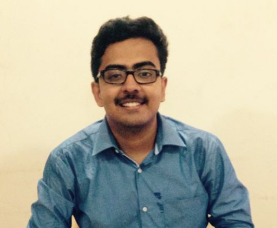What You'll Learn
Gain knowledge of how to set up, configure, and maintain Oracle Solaris systems in practical settings in this Oracle Solaris Course in Bangalore.
Become proficient in system administration, user management, and Solaris file systems.
Get practical experience with network optimisation, security, and setup.
Recognise system troubleshooting, patch management, and performance optimisation.
Examine Oracle Solaris’s features for high availability, backup, and recovery.
Take advantage of professional Oracle Solaris training in Bangalore to advance your career.
Oracle Solaris Training Objectives
- Historically, Solaris was acquired as proprietary software. In June 2005, Sun Microsystems published most of the codebase under the CDDL license and established the OpenSolaris open source project.
- With OpenSolaris, Sun is required to produce a developer and user center around the software. After the purchase of Sun Microsystems in January 2010, Oracle determined to discontinue the OpenSolaris appearance and the development design.
- Single merchant. You get the device and software from the corresponding place (Oracle), which suggests you won’t get bucks reached around in the event of a puzzle.
- Do you require crazy fast hardware? We’re reading 32-core processors (and you can have 16 of those). Support in device for 4096 threads, and 16TB of RAM. Oracle SPARC regularities are mental abstinence.
- It used Solaris for a long time, ran a design system that accepted financial management.
- It’s a very good OS, last season I checked uptime was about 500 days on that instrument.
- It used to be the case that Solaris had many features not present in Linux, stuff like ZFS, Containers, DTrace, and support for extremely large hardware.
- If you’re programming Java, C, or whatever, you’ll notice it pretty much identical to GNU/Linux. There are differences though, JavaFX isn’t supported on Solaris, so that’s something to be conscious of.
- Solaris begins with CDE, which is parts nicer than GNOME or KDE and has a “decent UNIX” vibe to it.
- I used Solaris for a long time on the desktop, Ultra 1, Ultra 2, Ultra 80, and then Sun Rays compared to a server.
- As a server OS: Solaris has several benefits over Linux. In my judgment it's superior.
- I'm listing what I find the various important benefits below. As a desktop OS: Solaris development has pretty much quit the desktop. It was probably an okay-ish OS for this design back in the 80'ties, but you really shouldn't hold it for desktop purpose in this day and age.
- Linux is far more beneficial as a desktop OS than Solaris.
- Beware when you understand old reports regarding Solaris' lack of hardware support. Many of the objections were related to Solaris not recommending this or that desktop device. Irrelevant!
- Knowing that you should use ‘the best tool for the right job’, a better proposal would be; “Better for what?” overlap like a Venn Diagram but, when correctly understood, they complement one different rather than struggling.
- It is managed by ex-OpenSolaris developers at Joyent. Joyent is presently owned by Samsung.
- With SmartOS you can design zones that can run Linux, Windows, or other OSs on a ZFS file operation. This has a lot of advantages.
- Evolution is the manageable answer. In a business software product, a team of developers builds the features and works out explanations for all the bugs likely to threaten the system.
- They frequently do this very well and release a good investment product. That, however, is as good as it gets, and again time malware undermines the product condition.
- But there’s a second purpose. In many countries, including the USA, UK, and China, they also struggle with their social security agencies to put in backdoors for those companies to monitor users.
- Hackers - many of whom operate for competing for federal security agencies, target these systems exactly to compromise the management of those countries.
- Solaris is a portion of the *nix family of operating arrangements. While it has its structure and set of features, it is used frequently for the same purposes as other server operating methods are.
- Solaris was originally produced by Sun, but it is currently occupied by Oracle, which continues to promote and market it.
- It has been a closed-source operating system since version 11. It is possible for the quality of CPU architectures now, though it used resources of Sun’s SPARC CPUs
- Solaris - which is a “genuine” Unix and traces its ancestors back to UNIX System V, Release 4, which was the last “original” AT&T Unix.
- FreeBSD - used in multiple data centers, based - surprisingly acceptable - on Berkeley Software Distribution (BSD) Unix.
- macOS - practiced in Macintosh computers, which outlines its lineage back to NeXTSTEP, which is a Berkeley Software Distribution Unix.
Request more informations
Phone (For Voice Call):
+91 89258 75257
WhatsApp (For Call & Chat):
+91 89258 75257
Oracle Solaris Course Benefits
Professionals can administer and optimise Oracle's enterprise-class operating system with the help of Oracle Solaris Training in Bangalore. Installation, configuration, security, and performance optimisation of the system are all covered in the course. In order to ensure effective and safe system operations, learners obtain practical experience in managing virtualised environments, network services, and storage solutions. Career opportunities in system administration and high-performance IT environments are improved by this expertise. You will be work on Real-time Oracle Solaris Projects in Bangalore
- Designation
-
Annual SalaryHiring Companies
About Oracle Solaris Certification Training
Comprehensive instruction on administering and managing Oracle Solaris operating systems is provided by our Oracle Solaris Training Institute in Bangalore. Through practical exercises and real-world settings, learn critical skills such system installation, setup, user administration, security, networking, and performance tuning you will able apply for Oracle Solaris Internship in Bangalore. Develop your ability to manage Oracle Solaris environments efficiently. Our Oracle Solaris Course With Placement guarantees that you are ready for a prosperous career as an Oracle Solaris Administrator, with access to more than 500 hiring partners and Oracle Solaris Placement support.
Top Skills You Will Gain
- System Installation
- User Management
- Network Configuration
- Disk Management
- Security Hardening
- Performance Tuning
- Virtualization Setup
- Backup Solutions
12+ Oracle Solaris Tools
Online Classroom Batches Preferred
No Interest Financing start at ₹ 5000 / month
Corporate Training
- Customized Learning
- Enterprise Grade Learning Management System (LMS)
- 24x7 Support
- Enterprise Grade Reporting
Why Oracle Solaris Course From Learnovita ? 100% Money Back Guarantee
Oracle Solaris Course Curriculum
Trainers Profile
Our Oracle Solaris Training in Bangalore to be one of the best leading IT training with best 11+ years experienced IT professionals and skilled resources . It will be very helpful for the beginners to start learn our Best Oracle Solaris Training .All trainers working as in Top MNC's they are having live projects , trainers will use these projects during the class sessions .
Syllabus of Oracle Solaris Course Download syllabus
- Introduction to UNIX
- What is Kernel – Shell – File System – Client/Server
- Hardware Requirements – Sparc vs Intel
- Basic Unix commands
- Openboot interface
- Openboot parameters
- Device names and aliases
- Boot Options
- Booting with GRUB
- Boot Phases
- init
- System run levels
- inittab file
- Run control scripts
- Adding a run control script
- Disabling a run control script
- The shutdown command
- The init command
- The halt/poweroff commands
- The reboot command
- The stop-a command
- Basic Features
- SMF Environment
- SMF and Booting
- SMF Environmental Structures
- Service States
- Managing Services
- Listing Services with svcs and inetadm
- Managing the State of a Service with svcadm
- Configuring a Service with svccfg
- Managing the State of inetd Network Services with inetadm
- Installation requirements
- Partitions and multiple disks
- Packages, Clusters and Groups
- Configuration cluster
- Definition of Installation methods
- Interactive Installation Process
- Documentation Packages
- Configuration clusters
- Displaying current software package information
- Checking the installation of a package
- Adding software packages
- Removing software packages
- Package logfiles & Troubleshooting tips
- Introduction to Process Management
- The ps command
- The prstat command
- The kill command
- Using the cron processes
- Creating crontab entries
- Crontab command options
- The at command
- Maintenance of patches and patch clusters
- Verification of currently installed patches
- Installing a patch on the system
- Removing a patch from the system Patch logfiles
- Displaying disk information
- Partitions/Slices
- Naming conventions
- Physical device names
- Instance name
- Logical device names
- Block and charLearnoVitar devices
- Configuring new disk devices
- Partitioning the disk with the format command and Solaris
- Management Console
- Making a new partition
- Disk based file systems
- Main root sub-directories
- Pseudo file systems
- Components of a ufs file system
- Boot block
- Superblocks
- Inodes
- Data disk blocks
- Ulimit parameter
- File types
- Symbolic and Hard links
- Creating file systems
- The newfs command
- The mount command
- The umount command
- The vfstab file
- The mnttab file
- Filesystem checking
- Determining if a file system needs checking
- Running fsck manually
- The lost+found directories
- Automounting CDs and floppies (Volume Management)
- Checking free disk space
- The df command
- The quot command
- The du command
- Freeing disk space
- Freeing up disk space with compression utilities
- Rotating files with logadm
- ZFS
- ZFS – A Basic Description
- Main Features
- ZFS Tools
- Managing ZFS Pools with zpool
- Pool Configuration Features
- Creating and Deleting (‘Destroying Pools’)
- Managing File Systems with ZFS
- Creating and Destroying a File System
- ACLs (Access Control Lists)
- The setfacl command
- The getfacl command
- The ACL mask
- USER MANAGEMENT
- User accounts
- Files used in creating a user – the passwd, group and shadow files
- Adding a user
- Changing user details
- Deleting a user
- User group maintenance
- Password administration
- Local Login control
- Remote Login control
- Login logs
- The wall command
- The message of the day
- Controlling the amount of disk space accessible to users using quotas
- Backup overview
- Backup and restore utilities overview
- Tape device names
- The mt utility – retentsion, rewind, space forward or backward and status
- The ufsdump and ufsrestore utilities
- ufs snapshots
- The print service
- Print service files
- Printer configuration with lpadmin
- Line printer commands – lpshut, lpsched, accept, reject, enable, disable, lpmove lpusers, lpstat, lp, cancel
- DNS Server and Client Setup
- NIS Servers and Clients
- Setting up NIS Servers and Clients
- NIS+ Overview
- LDAP Overview and Setting up an LDAP Client
- The Name Service Switch Configuration Files
- Name Service Cache Daemon
- Network File System (NFS)
- NFS Server
- NFS Client
- /etc/dfs/dfstab File
- NFS Client Configuration
- Troubleshooting NFS
- Cache File System (Cachefs)
- Creating a Cache File System
- Adding/Removing Cache File System
- NFS Logging – user access
- Automount Maps
- Registering Changes for Automount
- automount -v
- RAID
- Volume Management Operations
- metadevices
- State Database Replicas
- SVM Commands and Files
- Creating State Database Replicas
- Creating a Disk Concatenation
- Creating a Concatenation of two disk slices
- Creating and Managing Mirrors
- Creating File Systems on Volumes
- Deleting a Metadevice
- Dynamically Growing Existing File Systems
- Configuring Swap Space
- Adding a Swap File on an Existing File System
- Disabling Swap Space
- Automatic Installation
- Principles of JumpStart
- Server Setup for JumpStart
- Configuring NIS to Support JumpStart
- Configuring Non NIS Server for JumpStart
- Rules File
- Class File
- Check Utility
- Setting up DHCP for Intel clients
- Jumpstart troubleshooting
- Live Upgrade description
- Basic procedures
- lucreate and luupdate commands
- lucativate an lustatus commands
- Live Upgrade Example
- Dump File Definition
- System Crash Dumps
- Core Dump Configuration
- SYSLOG
- syslog Configuration
- The M4 Utility
- Editing the syslog.conf File
- Logging Telnet, FTP and other Networking Daemon
- Testing syslogd Logging
- Traditional Unix Security vs RBAC
- The RBAC Security Model
- Configuring RBAC Examples
- Zone Configuration Settings and CharLearnoVitaristics
- Creating Zones
- Managing the Zone State
- Zone System Processes
Request more informations
Phone (For Voice Call):
+91 89258 75257
WhatsApp (For Call & Chat):
+91 89258 75257
Industry Projects
Career Support
Our Hiring Partner
Request more informations
Phone (For Voice Call):
+91 89258 75257
WhatsApp (For Call & Chat):
+91 89258 75257
Exam & Oracle Solaris Certification
At LearnoVita, You Can Enroll in Either the instructor-led Oracle Solaris Online Course, Classroom Training or Online Self-Paced Training.
Oracle Solaris Online Training / Class Room:
- Participate and Complete One batch of Oracle Solaris Training Course
- Successful completion and evaluation of any one of the given projects
Oracle Solaris Online Self-learning:
- Complete 85% of the Oracle Solaris Certification Training
- Successful completion and evaluation of any one of the given projects
These are the Different Kinds of Certification levels that was Structured under the Oracle Solaris Certification Path.
- Oracle Certified Associate, Oracle Solaris 11 System Administrator
- Oracle Certified Professional, Oracle Solaris 11 System
- Oracle Solaris 11 Installation and Configuration Certified
- Learn About the Certification Paths.
- Refer and Read Recommended Books Depending on Which Exam you are Going to Take up.
- Join LernoVita Oracle Solaris Certification Training in Bangalore That Gives you a High Chance to interact with your Subject Expert Instructors and fellow Aspirants Preparing for Certifications.
- Solve Sample Tests that would help you to Increase the Speed needed for attempting the exam and also helps for Agile Thinking.

Our Student Successful Story
How are the Oracle Solaris Course with LearnoVita Different?
Feature
LearnoVita
Other Institutes
Affordable Fees
Competitive Pricing With Flexible Payment Options.
Higher Oracle Solaris Fees With Limited Payment Options.
Live Class From ( Industry Expert)
Well Experienced Trainer From a Relevant Field With Practical Oracle Solaris Training
Theoretical Class With Limited Practical
Updated Syllabus
Updated and Industry-relevant Oracle Solaris Course Curriculum With Hands-on Learning.
Outdated Curriculum With Limited Practical Training.
Hands-on projects
Real-world Oracle Solaris Projects With Live Case Studies and Collaboration With Companies.
Basic Projects With Limited Real-world Application.
Certification
Industry-recognized Oracle Solaris Certifications With Global Validity.
Basic Oracle Solaris Certifications With Limited Recognition.
Placement Support
Strong Placement Support With Tie-ups With Top Companies and Mock Interviews.
Basic Placement Support
Industry Partnerships
Strong Ties With Top Tech Companies for Internships and Placements
No Partnerships, Limited Opportunities
Batch Size
Small Batch Sizes for Personalized Attention.
Large Batch Sizes With Limited Individual Focus.
Additional Features
Lifetime Access to Oracle Solaris Course Materials, Alumni Network, and Hackathons.
No Additional Features or Perks.
Training Support
Dedicated Mentors, 24/7 Doubt Resolution, and Personalized Guidance.
Limited Mentor Support and No After-hours Assistance.
Oracle Solaris Course FAQ's
- LearnoVita is dedicated to assisting job seekers in seeking, connecting, and achieving success, while also ensuring employers are delighted with the ideal candidates.
- Upon successful completion of a career course with LearnoVita, you may qualify for job placement assistance. We offer 100% placement assistance and maintain strong relationships with over 650 top MNCs.
- Our Placement Cell aids students in securing interviews with major companies such as Oracle, HP, Wipro, Accenture, Google, IBM, Tech Mahindra, Amazon, CTS, TCS, HCL, Infosys, MindTree, and MPhasis, among others.
- LearnoVita has a legendary reputation for placing students, as evidenced by our Placed Students' List on our website. Last year alone, over 5400 students were placed in India and globally.
- We conduct development sessions, including mock interviews and presentation skills training, to prepare students for challenging interview situations with confidence. With an 85% placement record, our Placement Cell continues to support you until you secure a position with a better MNC.
- Please visit your student's portal for free access to job openings, study materials, videos, recorded sections, and top MNC interview questions.

- Build a Powerful Resume for Career Success
- Get Trainer Tips to Clear Interviews
- Practice with Experts: Mock Interviews for Success
- Crack Interviews & Land Your Dream Job
Get Our App Now!

















 Regular 1:1 Mentorship From Industry Experts
Regular 1:1 Mentorship From Industry Experts




